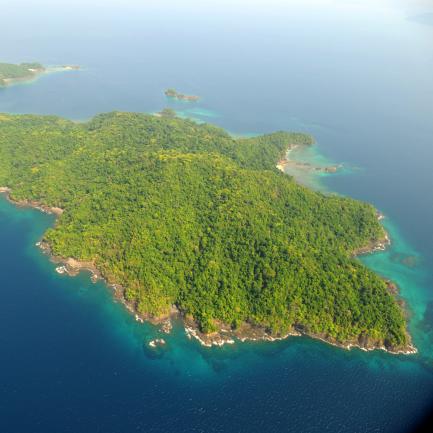Panama Safeguards Marine Life in Pacific World Heritage Site
Tropical oceans and reefs are some of the most biodiverse, threatened ecosystems on the planet. Based on nearly two decades of marine biodiversity data from Panama’s Coiba National Park gathered by the Smithsonian Tropical Research Institute, the University of Panama and Panama’s National Environment Authority, a new fisheries management plan has been established for this World Heritage Site.
One of the Smithsonian’s challenges is to “understand and sustain a biodiverse planet.” Smithsonian research has shown that establishing large marine protected areas allows fish populations to rebound, but only if fishing is regulated.
“This plan, approved by Coiba’s executive council, is a biological and socioeconomic plan built on scientific data, agreed to by fishers and included input from all sectors,” said Juan Maté, STRI’s manager for scientific affairs and operations and coordinator of the planning process. New regulations include catch limits, fishing gear specifications, no-take zones and closed seasons. The most comprehensive plan of its kind in Panama, it also regulates sport fishing and will serve as an example for marine-protected areas in the region.
Coiba’s export-focused traditional fishery is worth about $1 million annually and supports about 1,000 local residents. Studies by the University of Panama show that snapper size declined in Coiba during the past three years, underscoring the urgency of enacting the long-awaited fisheries management plan.
The plan establishes a no-take zone within 1.8 nautical miles of all island coastlines within the marine protected area to safeguard fish breeding areas. It also sets minimum hook sizes for targeted species. This is especially important for snappers, as juveniles are most often caught using smaller hook sizes. Juveniles generate larger revenue than their larger counterparts in international markets, as they are more presentable on plates; but because they are caught before they have a chance to reproduce, snapper populations decline as a result.
Grouper species, mahi-mahi (dolphinfish or dorado) and sport fish species are also covered by the rules. The plan was based on a three-year study launched not long after Panama declared Coiba a park in 2004, with funds from United Nations Foundation through UNESCO and Conservation International. To better understand local fishing practices, researchers used traditional vessels for the study. Their findings included data on annual fish catches, locations preferred by fishers, and the time of year when certain fish are typically caught. Landings at two ports, Puerto Remedios and Puerto Mutis, were also monitored. The study produced the first data on the biology of snapper species in Coiba. Snapper reproduces in park waters between January and April, now established as closed season for these species in the plan.
The Smithsonian Tropical Research Institute, headquartered in Panama City, Panama, is a unit of the Smithsonian Institution. The Institute furthers the understanding of tropical nature and its importance to human welfare, trains students to conduct research in the tropics and promotes conservation by increasing public awareness of the beauty and importance of tropical ecosystems. Website: www.stri.si.edu.
# # #
SI-149-2014
Beth King
202-633-4700 x 28216


